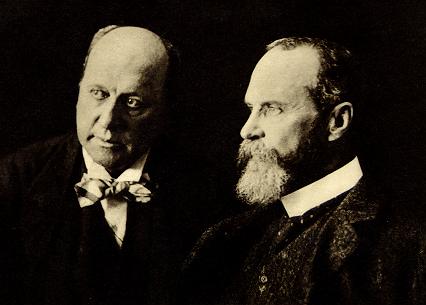"Saturday, April 25, 2009
Markets Cheer Stress Test Double Speak
The release claiming to describe how the stress tests were conducted in fact provided no new information. Some analysts were more than a tad dismissive:
The central bank released a so-called white paper today describing methods used by examiners from the Fed, the Federal Deposit Insurance Corp. and the Office of the Comptroller of the Currency to calculate the capital buffer the banks will require through 2011 under two economic scenarios.
“The anticipation over the white paper appears to be much ado about nothing,” said Josh Rosner, an analyst at independent research firm Graham Fisher & Co. in New York. “The most significant numbers provided by the Fed in the paper appear to be the page numbers.”
Financial stocks did well on the belief that most of the big banks would get clean bills of health. But that was the plan from the outset, to validate that the system was more or less OK so that if the poor chump taxpayer had to stump up more money, it could be positioned as due to completely unforeseen events (thanks to having put on very big blinkers) yet still a good risk.
The cheer seems a naive view. Citi is far from out of the woods, with a half trillion of foreign deposits, plus roughly $1 trillion in off balance sheet exposures (remember those SIVs, the watchword of late 2007?). Dislocation there would have far bigger ramifications.
The Financial Times, looking at more or less the same fact set, comes to less upbeat conclusions. Is this the result of being further from the spinmeisters?
From the Financial Times:
Some of the country’s biggest banks will be asked to raise more capital by US authorities following the completion of bank stress tests, senior Federal Reserve officials said on Friday.
A second, larger, group of leading banks will be asked to improve the quality of their capital by increasing their amount of common equity, the officials indicated.
Yves here. A surprisingly large number of market participants are of the view that the current rally is at least in part the result of market manipulation. I can't recall ever seeing so much commentary to that effect. It amounts to an open secret. Even during the commodities run-up of last year, if you dared suggest there was a speculative component, you were treated as a conspiracy theorist. Now a fair number of commentators are making more aggressive claims, and they don't seem terribly far out.
The latest sign of something out of whack is via Jesse, who tells us that insider sales are at high levels. When did that last happen? October 2007. Admittedly, not long ago, but nevertheless not a sign of confidence.
Now back to the FT. The officialdom has wanted banks to raise more equity since the Bear collapse. They fantasized that the banks would be able to get enough done in that recovery to stave off disaster. But as John Dizard pointed out at the time, the needs were so massive that (and he was serious) that central bankers would need to help conduct road shows.
That didn't happen, needless to say. A year later, same problem, bank stocks much cheaper even post rally, so any equity raise more dilutive. And the powers that be have to hope all these banks that need more capital (admittedly reduced considerably thanks to the kindness of taxpayers) raise funds in this window.
The best of breed (for now) Goldman offering was a bit sloppy. Think all these banks, particularly with the stigma of a stress test forced raise, will get their deals done? The vast majority will be back at the government feed bucket, yet Mr. Market is acting as if everything is all for the best in this best of all possible worlds. Back to the FT:
Meanwhile, people familiar with the situation said regulators indicated that Citigroup might need more capital beyond a planned conversion of preferred shares into common stock that will give the government a 36 per cent shareholding.
If Citi has to raise more funds from the government, the authorities might force out Vikram Pandit, its chief executive. However, they added that no decision had been made and each bank had a week to discuss the results of the tests with regulators. Citi declined to comment.
While banks will be encouraged to raise the equity needed from the market, those unable to do so may have to ask the government to convert the preferred shares it holds in them into common equity. This could result in the US government ending up owning – at least temporarily – stakes in a number of the top US financial institutions.
Recall that banks (Citi et al.) that can't raise the needed capital in six months then have to take more TARP funding. And recall further that the "stress" scenario is increasing looking like the mainstream forecast.
The Wall Street Journal has a similar report, with the addition than three of the 19 are to bolster their equity levels:
The identities of the banks, among the 19 institutions that were subjected to federal "stress tests," couldn't be learned. Analysts believe they likely include regional banks with large exposures to commercial real estate in the Midwest and Southeast. Three people familiar with the matter said at least three banks are in this position.
As we said, if the stress test fingers Fifth Third (clean reporting, well managed God-awful geographic footprint) and not Citi, you know the the priority is finding examples to validate its seriousness, and not really discovering real risks.
The problem with the tests is that the focus on the loan books (as reported by the AP) is missing the fact that loans decay more gracefully than bad structured debt or derivatives exposure. Outlier events will hit the big capital markets players far worse than traditional banks. But those scenarios have been deliberately omitted.
And per Bill Black, the emphasis on loans is a charade without inspection of the underlying loan files. And the number of inspectors was clearly insufficient for that to have happened.
The strategy is TinkerBell: if enough people applaud, belief alone will restore goners. That may work in theater, but I'm loath to rely on mere faith in matters of consequence. And as this blog has stressed, there does not seem to be a Plan B (the ideas of Paul Volcker and others not in the Summers/Geithner camp have been relegated to a policy gulag).
Me:







































Yves. Thanks for bringing up the Dizard. It allows me to comment on Bears and its importance for this crisis. I could just write it up, but I'm a commenter, and by nature passive. I'm passive with women as well. In fact, passivity is the theme of my second novel.
So, let's look at Dizard:
"The Fed itself would have to be a co-sponsor in some form."
"For all the chicanery of speculators and hedgers on the exchanges, there have been no fears of contagion, of one participant's failure leading to others, of the sort that led to the Bear Stearns bail-out/ takeover/near collapse."
So, I made the following assumptions from Bear:
1) The govt fears Debt-Deflation
2) The govt fears we're in a bubble
3) There's no Plan B
4) There's no free market plan
5) The govt will have to guarantee everything
I couldn't explain the bailout without these assumptions.
Now, I could be wrong, but I thought that I read at the time that Bernanke was a follower of Fisher and that explained his view on Bear. Of course, since then, there are a number of commenters who say that Bernanke doesn't understand Fisher. In any case, I have to admit being fooled, and assuming that we could handle this crisis well.
Here's Paulson in March 2008:
"We are working to get through the current period of market turmoil while minimizing its impact on our economy. And, as we do so, risk is being re-priced and markets are de-leveraging. This is creating liquidity challenges and, as a result, credit markets are not functioning as normal. We are encouraging financial institutions to continue to strengthen balance sheets by raising capital and revisiting dividend policies; we need these institutions to continue to lend and facilitate economic growth."
I take the risk of the de-leveraging to be Debt-Deflation. So, again, I thought that everybody understood where we were. Consequently, I'm having a hard time understanding the govt's responses since Bear.
Okay. Let's go to Fannie/Freddie:
"Assumed guarantees
There is a wide belief that FNMA securities are backed by some sort of implied federal guarantee, and a majority of investors believe that the government would prevent a disastrous default. Vernon L. Smith, 2002 Nobel Laureate in economics, has called FHLMC and FNMA "implicitly taxpayer-backed agencies".[27] The Economist has referred to "[t]he implicit government guarantee"[28] of FHLMC and FNMA. In testimony before the House and Senate Banking Committee in 2004, Alan Greenspan expressed the belief that Fannie Mae's (weak) financial position was the result of markets believing that the U.S. Government would never allow Fannie Mae (or Freddie Mac) to fail.[29]"
My assumption:
1) The govt will bailout Fannie/Freddie, with 5 above still in place.
And it did, but it did so in a way that led investors to believe that the govt was not going to guarantee everything. If you look at when China started selling Agencies, you'll see that it's August 2008.
And then Lehman. The real question is why did this happen? Did the govt think it would be a disaster? From Swagel:
"Free Markets Day
The way Congressman Barney Frank put it at a hearing at which I testified on
Wednesday, September 17 was that we should celebrate, Monday, September 15, as
“Free Market Day”— Lehman Brothers was allowed to fail and the free market to work
on that day. Now, the next day, Chairman Frank continued, AIG had been bailed out so
“the national commitment to the free market lasted one day,”3 (as quoted by WSJ.com),
but we should celebrate that day.
The decision not to save Lehman Brothers is no doubt the most hotly debated decision of
during the crisis. Secretary Paulson and Chairman Bernanke have made the point that
with the firm evidently insolvent, they did not have the authority save it—the Treasury
outright had no authority, while the Fed could provide liquidity, not capital. The Fed can
lend, however, against collateral to its satisfaction, so in principle the Fed could have lent
against unencumbered Lehman’s assets—essentially what it did with AIG. This would
not have saved the Lehman—indeed, it would have concentrated losses on the rest of the
firm—but it is possible such lending could have provided time for a more orderly
dissolution of the firm (indeed, there are estimates that the disorder bankruptcy reduced
the recovery value of the firm by billions of dollars). The feeling at Treasury, however,
was that Lehman’s management had been given abundant warning that no federal
assistance was in the offing, and market participants were aware of this and had time to
prepare. It was almost as if Lehman management was in a game of chicken and
determined not to swerve."
China's actions in August should have signaled trouble. I think that he understands this. As to being prepared, this is the main problem I have with his essay. Things had gotten worse, not better. Nor was this a short term problem.
Here again:
"A number of lessons of that weekend have received extensive discussion in the financial
press and in the academic literature, including the role of liquidity (as discussed by Allen
and Carletti (2008)), fragilities arising from counterparty risks embedded in the tri-party
repo system and the over the counter derivative markets, and the need for a resolution
mechanism for non-bank financial institutions. At Treasury, two additional lessons were
learned: (1) we had better get to work on plans in case things got worse, and (2) many
people (at least in Washington, DC) did not understand the implications of non-recourse
lending from the Fed. This latter lesson was somewhat fortuitous, in that it took some
time before the political class realized that the Fed had not just lent JP Morgan money to
26
buy Bear Stearns, but in effect now owned the downside of a portfolio of $29 billion of
dodgy assets. This discovery of the lack of transparency of non-recourse lending by the
Fed was to figure prominently in the financial rescue plans adopted in the first part of
2009.
The Fed’s announcement of the primary dealer credit facility (PDCF) immediately after
the collapse of Bear Stearns seemed to us and many Wall Street economists to remove
the tail risk of another large financial institution suffering a sudden and catastrophic
collapse. This was a time to plan for further events.
Part of the planning was for the long-term, on which Treasury on March 31, 2008
released a Blueprint for a Modernized Financial Regulatory Structure with a vision for a
long-term reshaping of financial sector regulation. This had long been in the works—
indeed, Treasury had requested public comments on the topic in October 2007—but the
timing of the report led to press reports that this was Treasury’s “response” to the crisis.
More near term in vision was work being done on so-called “break the glass” options—
the reference being to what to do in case of an emergency. This work evolved from a
recurring theme of the input we received from market participants over the prior year,
which was that the solution to the financial crisis was for Treasury to simply buy up and
hold the “toxic” assets on bank balance sheets. Indeed, this suggestion found its way into
some versions of the Frank-Dodd bill. Eventually a memo was written that listed options
to deal with a financial sector crisis arising from an undercapitalized system—indeed, the
memo went through more than a dozen iterations in discussions around Treasury and
with other agencies between March and April. The options ended up being to buy the
toxic assets, turn the Treasury into a monoline and insure the assets, directly buy stakes in
banks to inject capital, or use a massive scheme to refinance risky mortgages into
government-guaranteed loans and thus improve asset performance and firms’ capital
positions from the bottom up. With estimates in mind that U.S. financial institutions
would suffer $250 billion of losses from mortgage securities, we envisioned a
government fund of $500 billion. A mix of asset purchases, capital injections, and
additional private capital raising by banks would allow this amount to roughly offset the
forthcoming losses.
All of these options, however, would require Congressional action—this would move the
focus of financial markets policy back from the Fed to the Treasury, which would be
appropriate in what was a problem reflecting inadequate capital rather than insufficient
liquidity. But there was no prospect of getting approval for any of this. With growth
positive and the stimulus rebates only just beginning to go out in late-April, it was just
unimaginable then that Congress would give the Treasury Secretary such a fund. And it
was doubly unimaginable that the fund could be enacted without being used. Such a
massive intervention in financial markets could only be propose if Secretary Paulson and
Chairman Bernanke went up to Congress and told them that the financial system and
economy were on the verge of collapse. And we understood that by then it could well be
too late."
I don't know if this is true, but, if it is, congress would bear some heavy responsibility for this crisis. In my opinion, from Lehman, we've been in a slow-motion Debt-Deflation. The govt's actions have done a lot, but we could have done a lot better. For one thing, we could have recognized that the govt has to guarantee everything in order to stop Debt-Deflation. Does that mean we want to spend a lot of money? Quite the contrary, it means that we expect the guarantee to stop the panic, the downward spiral, and allow:
"This would
not have saved the Lehman—indeed, it would have concentrated losses on the rest of the
firm—but it is possible such lending could have provided time for a more orderly
dissolution of the firm (indeed, there are estimates that the disorder bankruptcy reduced
the recovery value of the firm by billions of dollars)."
This could have saved an unknown amount of dollars and jobs. Now, I understand that many, if not most, people don't agree with me, and that's fine. But if you do, do you really believe that the blanket guarantees could have passed the congress or gotten our citizens behind it? From my point of view, we have a crony welfare state which caused and continues to hinder our solving the crisis, but we also have a system in which hard choices and tough news is constantly deferred and put off by everyone. We have the ghastly hybrid precisely because we disagree and have different solutions. Given that, it's amazing that we seem to be lurching towards some decent solutions. One minority view, and tentative supporter of Geithner.
Don the libertarian Democrat
PS Contra Dizard, the Pharisees and Money Changers were not evil people. The Pharisees allowed the average Jew to act like a priest in everyday life, honoring the average person. The money changer allowed average worshipers, who's offerings might be damaged in transport, to sell the offering locally, get cash for it at the Temple ( there were lots of currencies ) and buy an acceptable offering at the Temple. Again, a plan designed to help the average Jew.
April 25, 2009 4:52 PM